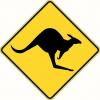I am planning to purchase a drill press for general household use; I have several projects - some wood, some metal, and some plastic - that require more precision than I can achieve using my handheld drill.
Last having used a drill press 30 years ago in shop class, I'm starting with effectively zero knowledge on the subject. I've spent the past few weeks, however, reading product literature, user manuals, and discussion forums (thank you to the authors of the myriad useful posts on this topic) and am closing in on a decision. I have a pretty clear sense of my needs, and am able to weigh the value to me of most features, given their cost.
That said, without any first-hand experience to speak of, I don't know what I don't know. Therefore, I'd like to ask two questions of members who already own/use drill presses, and have the benefit of hindsight.
Specifically, if I could get the exact same machine, with only the following differences, would you recommend that I purchase one with a:
- Benchtop or floor mount?
- Reeves drive or three pulley system (assume the same minimum/maximum speeds and, say, a dozen pulley configurations for the latter)?
It's probably impossible to answer these questions without some context, yet I want to avoid steering anyone towards a particular answer. So, in general terms, I'll say on the first topic that:
- I'll be working from my multi-use garage, not a dedicated workshop.
- A benchtop model + bench, or a floor model, will cost me about the same amount of money and space.
- I don't otherwise need a bench (e.g. working space, storage), but I'm sure I'll use it if I have to get one.
- I can get wheels for either.
- I've read that floor models accommodate larger workpieces, but that I can also rotate the head of a benchtop model off of the side of the bench and put the workpiece on the floor.
- I might have to move the press on occasion - but trying to lift a benchtop model at a local retailer disabused me of the notion that I'm going to be dragging it around and clamping it on a table like I do with my grinder/vise/miter saw/etc. I expect that either will be largely stationary, out of necessity.
Basically, I could be talked into either mounting option.
On the second topic:
- The Reeves drive seems easier, but the consensus seems to be that changing pulleys is easy, too.
- I assume that a simpler system (three pulley) is more reliable and easier/cheaper to fix than a more complex one (Reeves). I worried about the same thing when switching from a truck with a manual 4WD shift lever & locking hubs to one with a push button, but I haven't had a single problem with the button in 20 years, so maybe modern engineering is just better than I think.
- I've read that some three pulley systems can have big gaps between adjacent speeds. I don't know if that's going to matter for me. Considering that, heretofore, I've drilled everything on "high" with my handheld drill, both systems seem to have plenty of speeds.
Honestly, I didn't even know until now that I should be using different drilling speeds for different materials and bits. Accordingly, I have no gut sense for the whole variable speed thing, other than having read a few charts.
Thank you, in advance, for your advice.




 Reply With Quote
Reply With Quote










